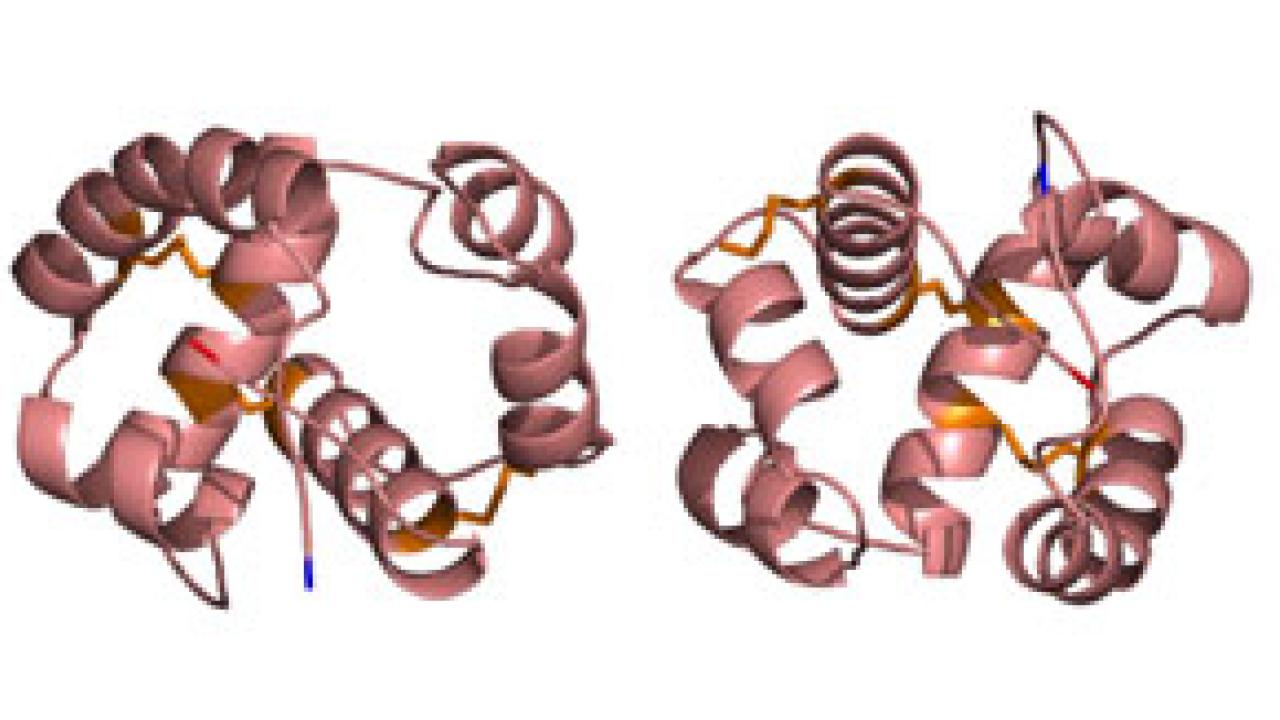Anopheles gambiae, the mosquito that is the main carrier of malaria in sub-Saharan Africa, finds its human food largely by scent. Now UC Davis researchers have discovered the crystal structure of a key component in the insect's sense of smell.
Insects smell through their antennae. When airborne scent molecules enter the antennae, they are picked up by specialized odorant-binding proteins and carried across a water barrier to the sensory cells, where they are released, said Walter Leal, professor of entomology at UC Davis.
"We can use the structure of the binding protein to find the compounds that it picks up, because we want to find chemicals that are attractants or repellents for mosquitoes," Leal said.
X-ray studies by graduate student Mark Wogulis and associate professor David Wilson of the Section of Molecular and Cellular Biology show that AgamOPB1, a protein identified in the mosquito by Leal's research group, forms pairs, or dimers, with a single long tunnel running through the middle of the complex to hold scent molecules.
"That's something we've not seen before in this class of proteins," Wilson said. The small number of other odorant-binding proteins whose structure is known, from bees, cockroaches and moths, have a smaller pocket or fold to pick up scent molecules.
The group's studies showed that a drop in pH causes the mosquito protein to change shape, opening the tunnel and releasing whatever molecule it is carrying. Other known odorant-binding proteins show a similar pH-dependent mechanism, Leal said.
The researchers will now try to identify the target molecule for AgamOPB1, by crystallizing the protein with its natural ligand.
Wogulis has a special interest in malaria, having served in the Peace Corps as a teacher in Africa.
"There was a lot of malaria about. Malaria season would come, and students would be absent sick," he said.
Other authors on the paper are Tania Morgan and Yukio Ishida of the Department of Entomology. The research is published in the Jan. 6 issue of Biochemical and Biophysical Research Communications.
Media Resources
Andy Fell, Research news (emphasis: biological and physical sciences, and engineering), 530-752-4533, ahfell@ucdavis.edu
David Wilson, Molecular and Cellular Biology, (530) 752-4298, wdwilson@ucdavis.edu
Walter Leal, Entomology, 530-752-7755, wsleal@ucdavis.edu
